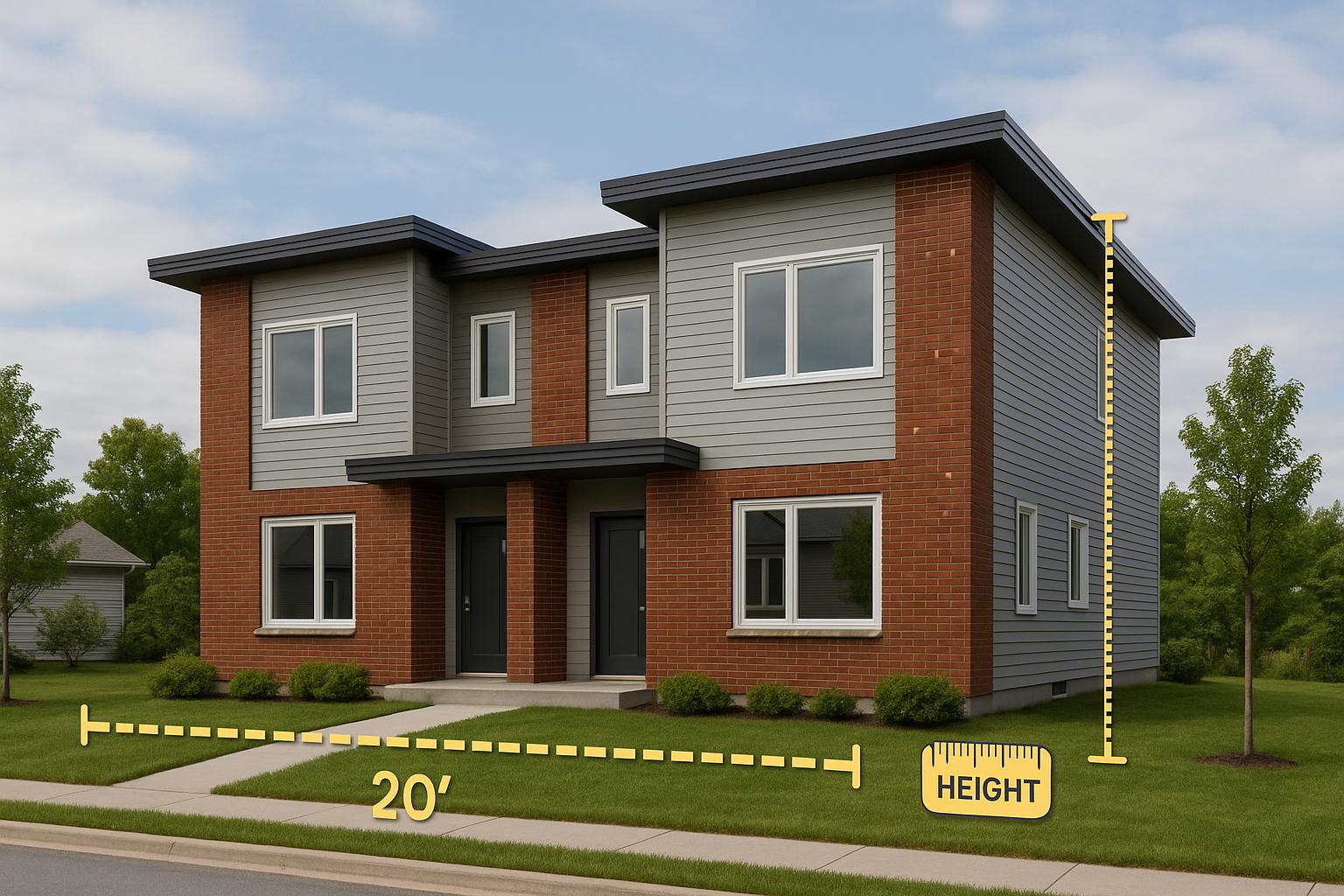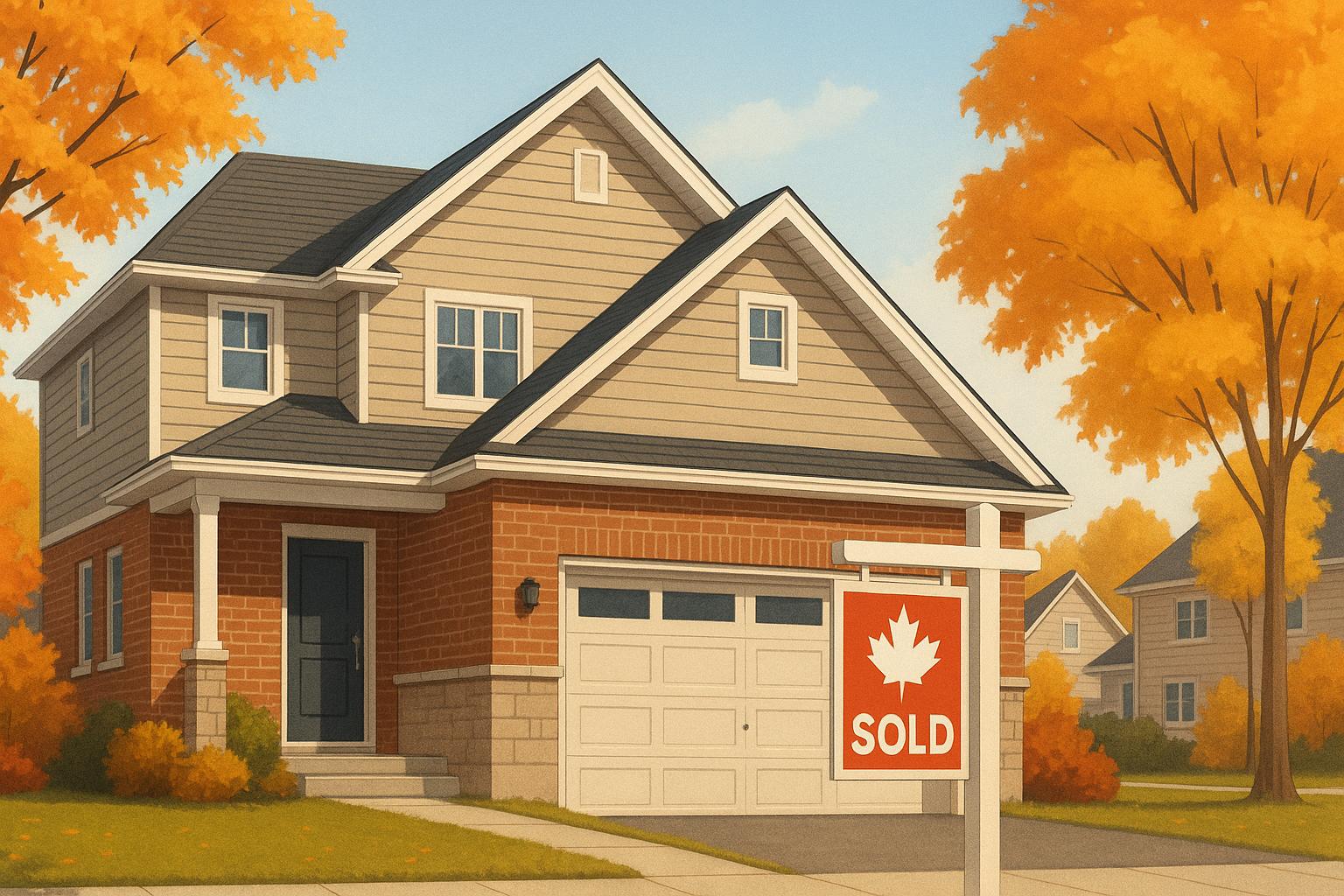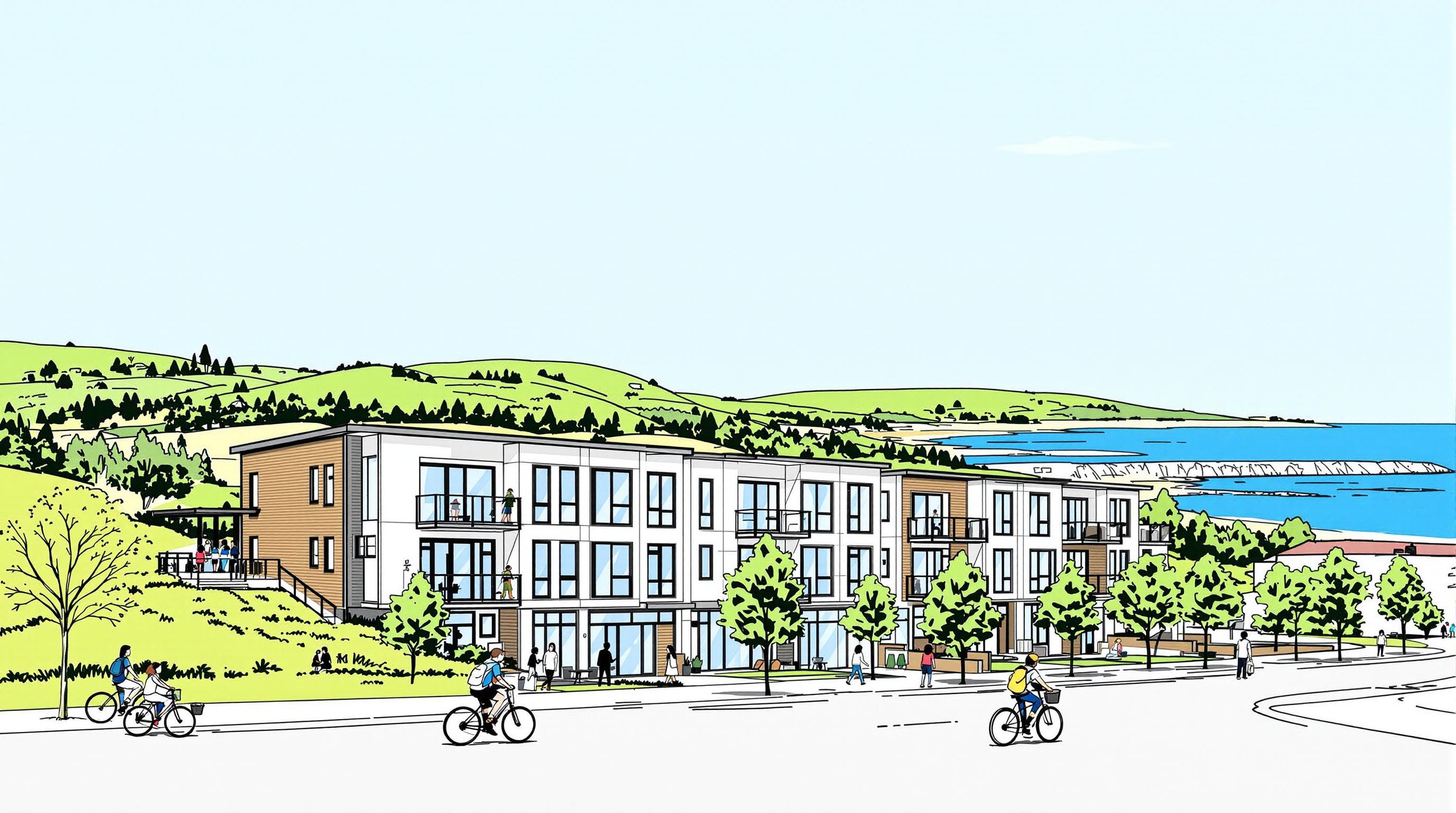Should you opt for below-grade parking in Halifax's CEN-2 zoning areas? Here's what you need to know:
- CEN-2 Zoning Basics: Designed for high-density, mixed-use developments, CEN-2 zoning encourages efficient land use.
- No Mandatory Parking Minimums: Since March 7, 2025, Halifax no longer requires minimum on-site parking for residential properties. Developers now decide based on market demand and tenant preferences.
- Cost Differences: Underground parking costs 6–13 times more per square foot than surface parking in Canadian cities.
- Key Challenges: Soil composition, land slope, excavation, and waterproofing are critical factors impacting feasibility and cost.
- Maintenance Costs: Below-grade parking requires ongoing upkeep to manage issues like water damage and concrete deterioration.
- Financing Options: CMHC's MLI Select program offers up to 95% financing and extended amortization to ease upfront costs.
Bottom Line: Below-grade parking is a costly but space-saving option that can boost property appeal, especially in transit-accessible, high-density areas. Developers should weigh site conditions, construction expenses, and long-term rental income before deciding.
How Much Does It Cost To Build A Parking Garage? - The Geography Atlas
Factors to Consider for Below-Grade Parking
Building below-grade parking is a complex decision that hinges on both technical and financial considerations. Property owners must carefully weigh these factors early in the planning process to avoid unexpected challenges and expenses during construction.
Site Conditions and Constraints
Understanding the specific characteristics of your site is essential before moving forward with below-grade construction.
Soil composition and contamination play a major role in determining feasibility. Geotechnical investigations are crucial to assess soil stability, identify potential contamination, and plan for remediation if needed. Contaminated soil, for instance, requires specialized treatment and disposal, which can increase both costs and project complexity.
Land slope and stability also impact construction plans. Sites with unstable or eroding slopes may need stabilization measures, such as rock reinforcement, to ensure the structure's safety. Early evaluation of these risks allows for better planning and prevents costly setbacks.
Excavation challenges should not be overlooked. Buried debris or other underground obstacles can delay timelines and inflate costs. Additionally, proper staging, covering, and disposal of excavated material are necessary to keep the project on track and compliant with regulations.
Environmental compliance is another critical factor. Large-scale excavation requires an Erosion and Sediment Control Plan to manage runoff and prevent sediment from contaminating nearby water sources. Adhering to these standards ensures the project aligns with environmental guidelines.
Cost Comparison: Surface vs. Below-Grade Parking
The financial gap between surface and below-grade parking is substantial. While specific data for Nova Scotia isn't readily available, figures from major Canadian cities highlight the stark difference in costs.
| Parking Type | Vancouver (per sq ft) | Toronto (per sq ft) | Cost Multiplier |
|---|---|---|---|
| Surface Parking | $12 – $25 | $15 – $30 | 1x (baseline) |
| Underground Parking | $160 – $250 | $175 – $300 | 6–13x higher |
Underground parking can cost 6 to 13 times more per square foot than surface parking.
Beyond the upfront expenses, long-term financial implications must also be considered. Shoshanna Saxe, Associate Professor at the University of Toronto and Canada Research Chair in Sustainable Infrastructure, notes:
"Before Toronto rolled back mandatory minimum parking requirements, you were seeing … lots of buildings where they had way more parking than anybody wanted. People just wouldn't claim them, and they have to be absorbed, in general, by the costs in the building." [2]
This highlights a key issue: unclaimed parking spaces can lead to higher overall building costs, which may ultimately affect housing affordability. These financial realities are an important consideration for developers navigating compliance and approval processes.
Building Code and Regulatory Requirements
Even though minimum parking requirements have been relaxed in many areas, developers still have the option to include additional parking if market demand supports it [1]. However, below-grade parking comes with more stringent requirements compared to surface options. Property owners must collaborate with design professionals and local building authorities to ensure compliance with accessibility, fire safety, and structural regulations.
The added complexity of below-grade parking means extra documentation and reviews are necessary, making it essential to account for these steps during the planning phase.
Financial Impact of Below-Grade Parking
Let’s break down how below-grade parking affects both upfront costs and long-term financial returns.
Construction Costs vs. Rental Income
Building below-grade parking comes with steep upfront costs. However, in areas where parking is scarce, offering dedicated parking spaces can boost rental income. This added revenue can help balance out the higher construction expenses over time, making the investment more appealing for property owners.
One financial advantage is the ability to depreciate these costs over several years through the Capital Cost Allowance. This depreciation not only spreads the expense but also provides tax benefits that can improve cash flow[3].
Ongoing Maintenance and Operating Costs
Maintaining below-grade parking is no small feat. Regular upkeep is essential to address common issues like water damage, which often arises from failing waterproof membranes. Problems such as leaks, moisture intrusion, and chloride-induced corrosion are frequent culprits. Concrete deterioration - manifesting as scaling, delamination, or debonding - is another challenge caused by exposure to salts and chemicals.
Preventive maintenance plays a critical role in managing these risks. Regular power washing can remove harmful substances like salts, chemicals, and vehicle fluids before they seep into the concrete. Property owners should avoid using de-icing salts like calcium chloride and sodium chloride, opting instead for alternatives such as sand. Keeping drains clean and addressing water accumulation promptly can prevent structural damage. Ignoring early warning signs can lead to escalating repair costs, making routine inspections and timely maintenance essential for long-term savings[4][5].
Financing Options and CMHC Programs

To ease the financial burden of constructing below-grade parking, consider available financing solutions. The CMHC MLI Select program, for instance, offers financing with 95% coverage and a 5% down payment, making projects more feasible.
Helio’s CMHC MLI Select construction package, priced at $200,000 per unit, includes energy efficiency upgrades required to qualify for these benefits. Additionally, the option for a 50-year amortization reduces monthly carrying costs, helping offset the higher upfront expenses of underground parking. With enhanced leverage of 20:1 compared to the standard 5:1, developers can construct more units with the same capital, accelerating positive cash flow early in the project’s lifecycle.
When to Choose Below-Grade Parking
Choosing the right parking option involves weighing construction expenses against long-term property value and local parking requirements.
Factors to Consider for Below-Grade Parking
When space is tight, below-grade parking can be a smart choice. It frees up surface area for additional rental units while ensuring compliance with municipal parking standards. Always review local regulations to confirm that your design aligns with these requirements.
The local rental market is another important factor. In areas where outdoor parking is less practical - think harsh winters - providing dedicated parking can make your property more attractive to tenants. This added convenience often translates into higher demand and potentially better returns.
It’s also worth noting that zoning regulations primarily address design elements like dimensions and screening. They often don’t cover engineering challenges. Property owners should assess site-specific factors, such as the overall lot layout, to determine whether below-grade parking is a feasible option.
Once you've decided to go below-grade, the next step is understanding how to manage the associated construction risks effectively.
Tackling Construction Risks
Managing the risks of below-grade parking is critical to avoid costly setbacks. Waterproofing is a major concern - poor planning here can lead to expensive water damage. Conducting thorough site assessments before breaking ground is essential to identifying potential issues early.
Excavation and other below-grade construction tasks can also lead to unexpected cost overruns if not accurately estimated. Working with multiple contractors often increases the risk of miscommunication and scheduling conflicts, which can further drive up costs and delay the project.
The Advantages of an Integrated Design-Build Approach
Many of these challenges can be addressed with an integrated design-build approach. This method brings design, engineering, and construction under one roof, ensuring a seamless workflow. Helio Urban Development, for example, offers single-point accountability, enabling faster problem resolution and eliminating delays caused by inter-contractor coordination issues.
This approach also provides fixed-price certainty and more efficient scheduling. Projects benefit from reduced timelines - some have been completed in just six months, compared to the extended delays often seen with fragmented methods.
Integrated inspections and measures like delay penalties add another layer of accountability. This reduces the risk of costly rework and keeps the project on track.
With thoughtful planning and the efficiency of an integrated design-build process, below-grade parking can become a valuable asset, enhancing your development's profitability and appeal.
sbb-itb-16b8a48
CEN-2 Projects with Below-Grade Parking
Examples from real-world CEN-2 developments highlight the advantages and challenges of incorporating below-grade parking. Here are two projects that demonstrate how thoughtful planning and design can address site-specific obstacles.
Project 1: High-Density Area Development
In Halifax, a fourplex project along a busy corridor showcased the potential of below-grade parking to make the most of limited land in a high-density setting. By opting for underground parking, the developers navigated strict surface lot constraints, meeting municipal parking requirements while preserving surface space for landscaping and tenant amenities.
Although this choice came with higher construction costs compared to surface parking, the design significantly boosted the property’s rental appeal. The project’s success was largely attributed to an integrated design-build approach, which ensured seamless collaboration between design, engineering, and construction teams.
Project 2: Tackling Challenging Site Conditions
In Dartmouth’s Woodside area, a development faced a steep lot and seasonal groundwater challenges that would have made surface parking difficult, requiring extensive grading and retaining walls. Instead, the team opted for an underground parking solution, leveraging advanced waterproofing and drainage systems to manage thaw-related groundwater issues.
Geotechnical studies revealed that the site’s soil conditions were suitable for underground construction, provided proper sealing was applied. By using an integrated design-build methodology, the project minimized inefficiencies often associated with complex below-grade construction.
Key Takeaways from These Projects
These examples highlight several critical lessons for successful below-grade parking in CEN-2 developments:
- Early site evaluation is essential: Detailed geotechnical and drainage assessments help identify potential challenges upfront, reducing unexpected costs later.
- Secure, convenient parking attracts tenants: Underground parking can boost a property’s appeal, leading to faster occupancy and stronger tenant retention - both of which contribute to better annual returns.
- Integrated design-build processes save time and money: Coordinating all aspects of the project reduces delays and keeps costs under control.
- Financial benefits can outweigh higher upfront costs: While underground parking involves a construction premium, the long-term gains - such as increased rental income and reduced vacancies - can justify the investment.
These case studies emphasize the importance of risk management through integrated planning. Developers who adopt a design-build approach often enjoy smoother construction processes, keeping projects on schedule and within budget.
Making Your Parking Decision
When deciding on the type of parking for your property, it's crucial to weigh factors like site conditions, construction costs, and long-term income potential. These elements can help you make a well-informed choice tailored to your project's needs.
Key Considerations
Site conditions should guide your choice, not personal preferences. Features like steep slopes, poor drainage, or limited land area often make below-grade parking a practical solution, even if it's not your first choice.
Higher construction costs can pay off in the long run. Secure, weather-protected parking often commands higher rental rates over time, potentially offsetting initial expenses.
Underground parking comes with stricter code requirements. You'll need to account for additional regulations, including ventilation, fire safety, and accessibility, which can impact your overall budget.
Take advantage of financing options like CMHC MLI Select. With up to 95% financing and extended amortization periods, this program can improve your cash flow and help manage the higher costs of below-grade construction.
Work with an integrated team to streamline the process. Coordinating excavation, waterproofing, and structural work under a single team can reduce delays and avoid costly missteps.
Steps to Take for a Successful Parking Plan
To ensure your parking solution is both functional and financially viable, follow these essential steps:
Start with a thorough geotechnical and zoning review. This review should include drainage assessments and municipal requirements to avoid surprises that could derail your budget.
Run detailed financial models. Compare the total cost of ownership for surface parking versus underground options, factoring in construction costs, ongoing maintenance, and potential rental income.
Consider partnering with an integrated design-build team. Firms like Helio Urban Development can handle all aspects of below-grade construction under one contract, simplifying the process and reducing risks.
"I personally guarantee every timeline because I've felt the pain of construction delays."
- Lloyd Liu, CEO of Helio Urban Development
Secure fixed-price contracts with penalties for delays. This ensures your project stays on schedule, protecting your rental income timeline.
For property owners in Nova Scotia, particularly those working on CEN-2 developments, success hinges on careful planning, realistic financial projections, and collaboration with professionals who understand the region's unique climate and soil challenges.
FAQs
What are the benefits of choosing below-grade parking for CEN-2 multi-unit developments?
Benefits of Below-Grade Parking for CEN-2 Zoned Multi-Unit Developments
Below-grade parking brings several benefits to CEN-2 zoned multi-unit developments, making it a smart choice for urban projects. By shifting parking spaces underground, you unlock surface space that can be transformed into landscaped areas, pedestrian-friendly zones, or other amenities. These enhancements not only improve the functionality of the property but also boost its visual appeal - qualities that can attract tenants and increase the property's market value.
Another advantage is the added security. Vehicles parked underground are better protected against theft or vandalism. Plus, in urban settings where space is at a premium, underground parking promotes efficient land use while reducing the need for sprawling surface lots. This creates a cleaner, more visually appealing environment.
For property owners, this thoughtful approach to parking can lead to better returns, especially in densely populated areas where maximizing land use is critical.
What are the best strategies to manage the costs and challenges of building below-grade parking in CEN-2 multi-unit developments?
Managing the expenses and complexities of below-grade parking demands thoughtful planning and strategic choices. Begin with a thorough site evaluation to examine critical factors like soil stability, water table levels, and land slope. This initial step helps pinpoint potential challenges and guides design decisions.
Prioritizing high-quality waterproofing and drainage systems is essential to guard against water damage, which can lead to costly repairs down the road. Opting for durable materials, such as precast concrete, can also help minimize long-term maintenance expenses.
It's equally important to work with seasoned contractors who specialise in below-grade construction. Their expertise ensures the project adheres to safety and quality standards. Additionally, incorporating fire safety measures and advanced security systems can help mitigate operational risks. To keep the project on track financially, always set aside a contingency budget to handle any unexpected issues that may arise.
What are the financing options for building below-grade parking, and how do they affect long-term financial planning?
Financing below-grade parking in Canada often relies on construction loans or mortgages. These can be set up as either fixed-price agreements, where costs are predetermined, or cost-plus agreements, where expenses are adjusted based on actual costs. The choice between these structures directly affects cash flow management, repayment schedules, and overall project budgeting. Depending on your location, you might also find regional grants or incentives to help reduce upfront expenses, though their availability can vary widely.
When looking at the bigger financial picture, it’s essential to factor in how these financing choices will influence overall debt, interest costs, and the return on investment (ROI) for your property. Careful financial planning is key to keeping your project financially stable while ensuring it remains profitable in the long run.



